If you make a purchase, My Modern Met may earn an affiliate commission.
hey readour disclosurefor more info.
Marine biologist and photographerJeff Milisenloves exploring the unknown.
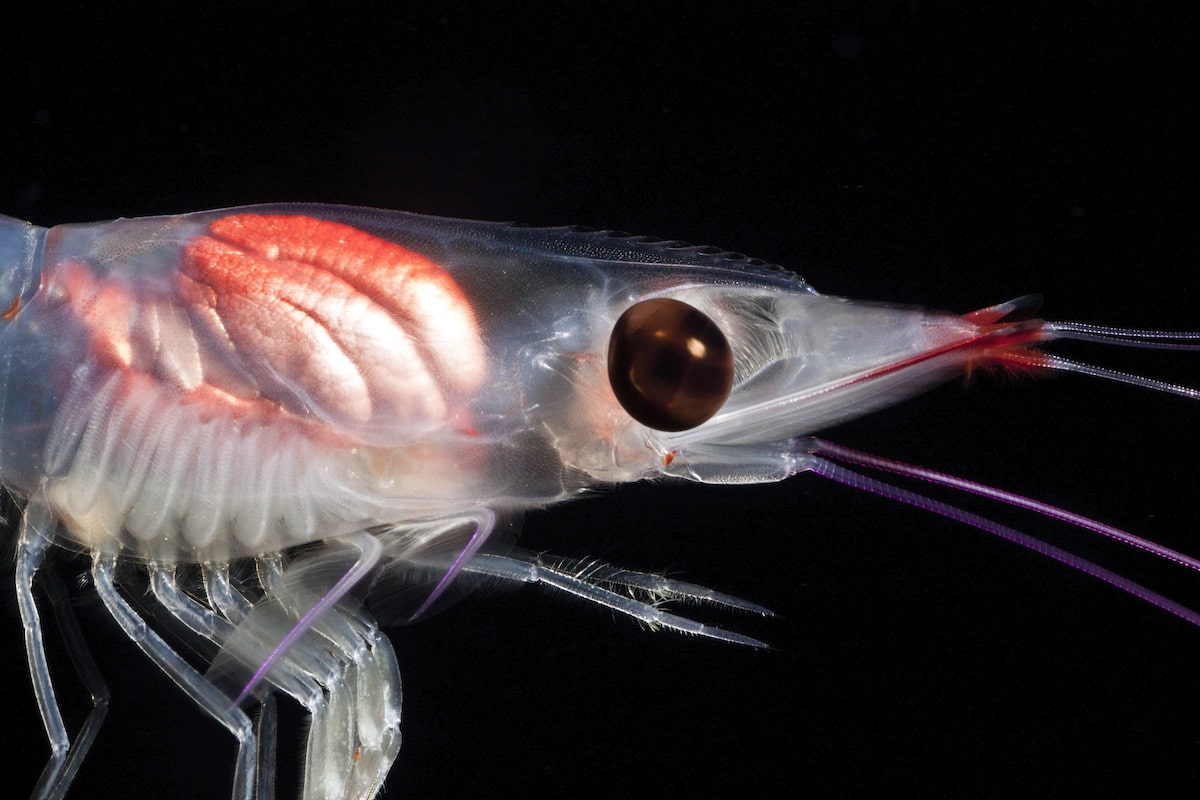
Blackwater photography freezes small aquatic animals in time (in this case, a Penaeid shrimp) so the viewer can focus on studying the details of something they have never seen before.This post may contain affiliate links. If you make a purchase, My Modern Met may earn an affiliate commission. Please readour disclosurefor more info.
Blackwater photography is done during a deepwater night dive over the open ocean.
Lights are then used to attract ocean, orpelagic, creatures that are photographed in their natural environment.
However, the payoff is big.

Paralarval octopus (Macrotritopus sp)
More and more frequently, blackwater photographers like Milisen are able to photograph species that have rarelyif everbeen seen.
And, they are able to photograph these animals fully intact.
This is important for researchers, who often receive samples after the plankton have been emptied out of nets.
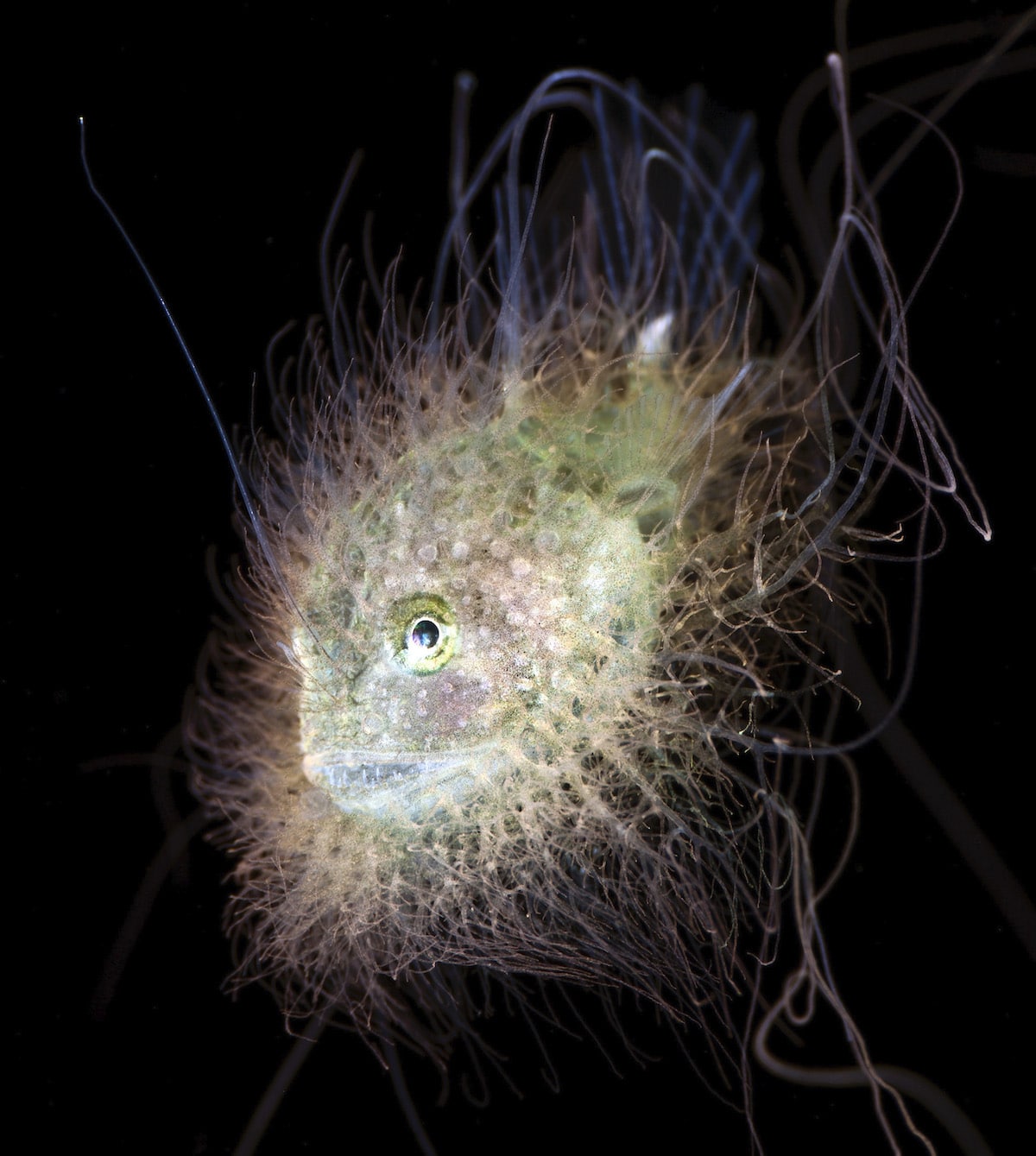
This is the first image of a hairy goosefish (Lophiodes fimbriatus) from Hawaii.
And more often than not, their condition is subpar.
Read on for My Modern Met’s exclusive interview.
Paralarval octopus (Macrotritopus sp)
What fascinates you about the underwater world?
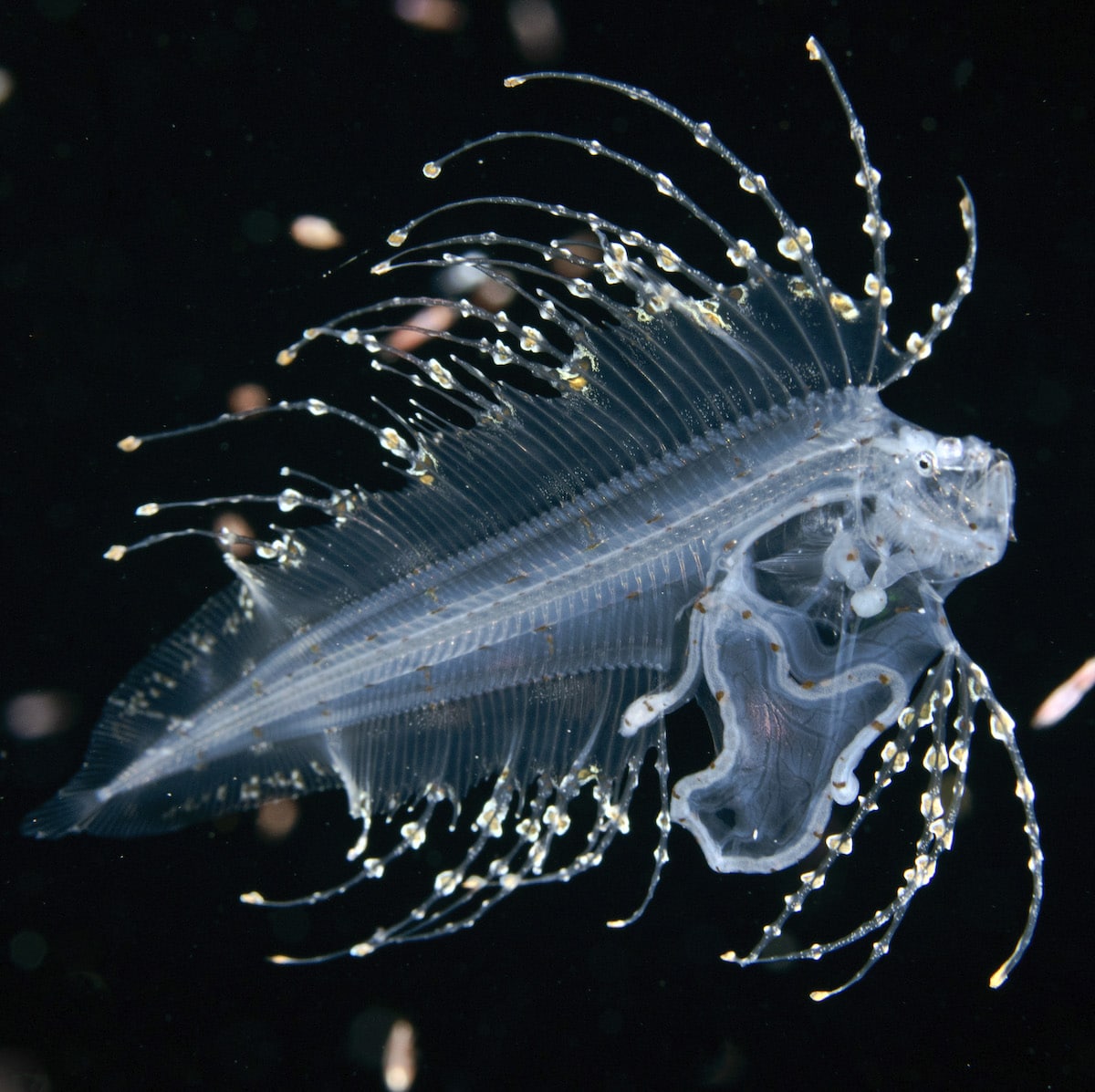
The larval fishes we see come from every corner of the nearby ocean. Most fish larvae develop at the surface where food is abundant, and far from the adult habitat for this cusk eel that lies thousands of feet beneath the water surface.
Underappreciated animals fuel my curiosity and my curiosity drives my need to explore.
I was the creepy snake kid growing up.
My room had aquariums of snakes lining one wall.
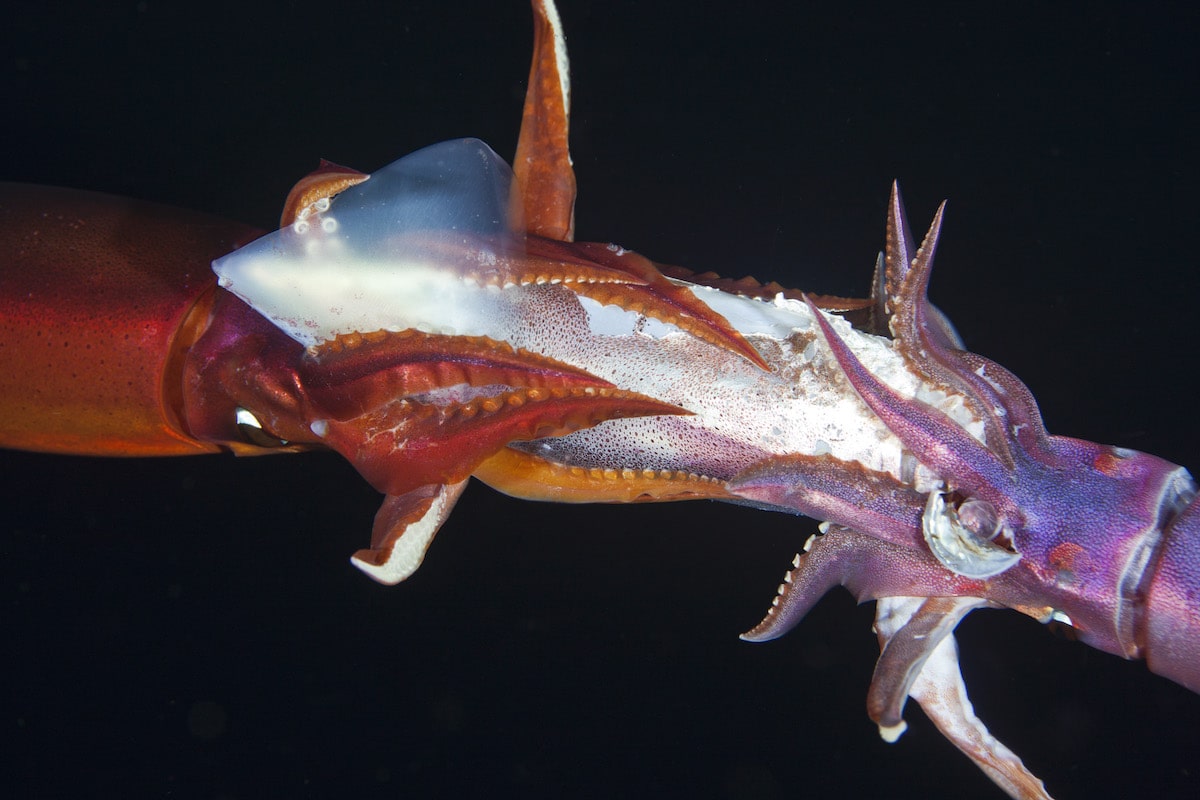
Squids serve as a major forage base for just about any animal that can consume one, including other squids! In this image, two squids fight over a third, unlucky friend in the middle.
Every few weeks, my parents would find one of my escaped pets crawling wild across the floor.
I would skip school to catch turtles or go fishing.
Ive always been fascinated by animals, which is why scuba diving was a logical next step.
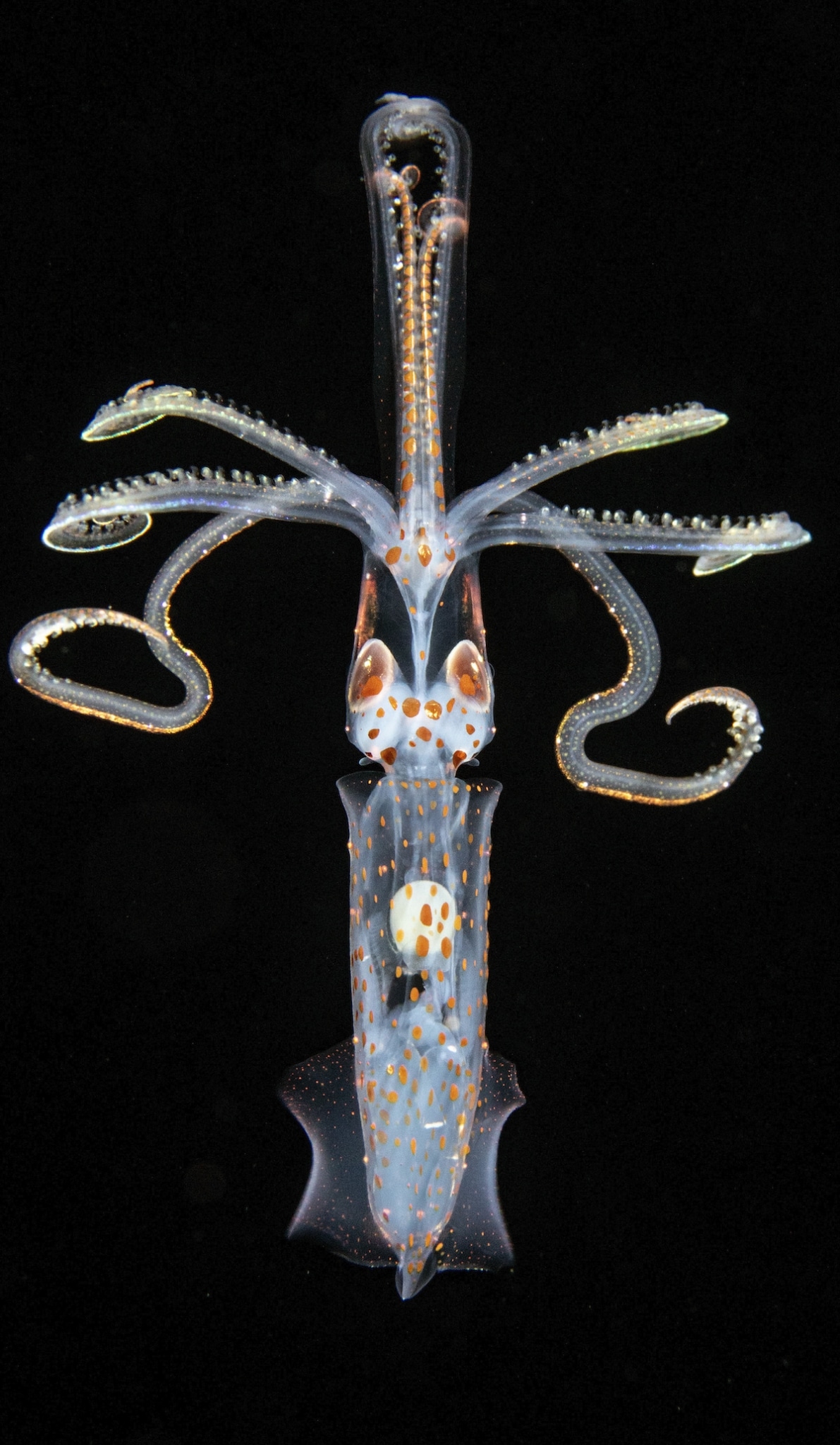
Young sharp-eared enope squids have incredible control over their tentacles so much so that they are capable of a wonderful variety of expressive poses.
Underwater, life is so much more abundant!
It didnt take long for that curiosity to transfer to fish, corals, and plankton.
This is the first image of a hairy goosefish (Lophiodes fimbriatus) from Hawaii.
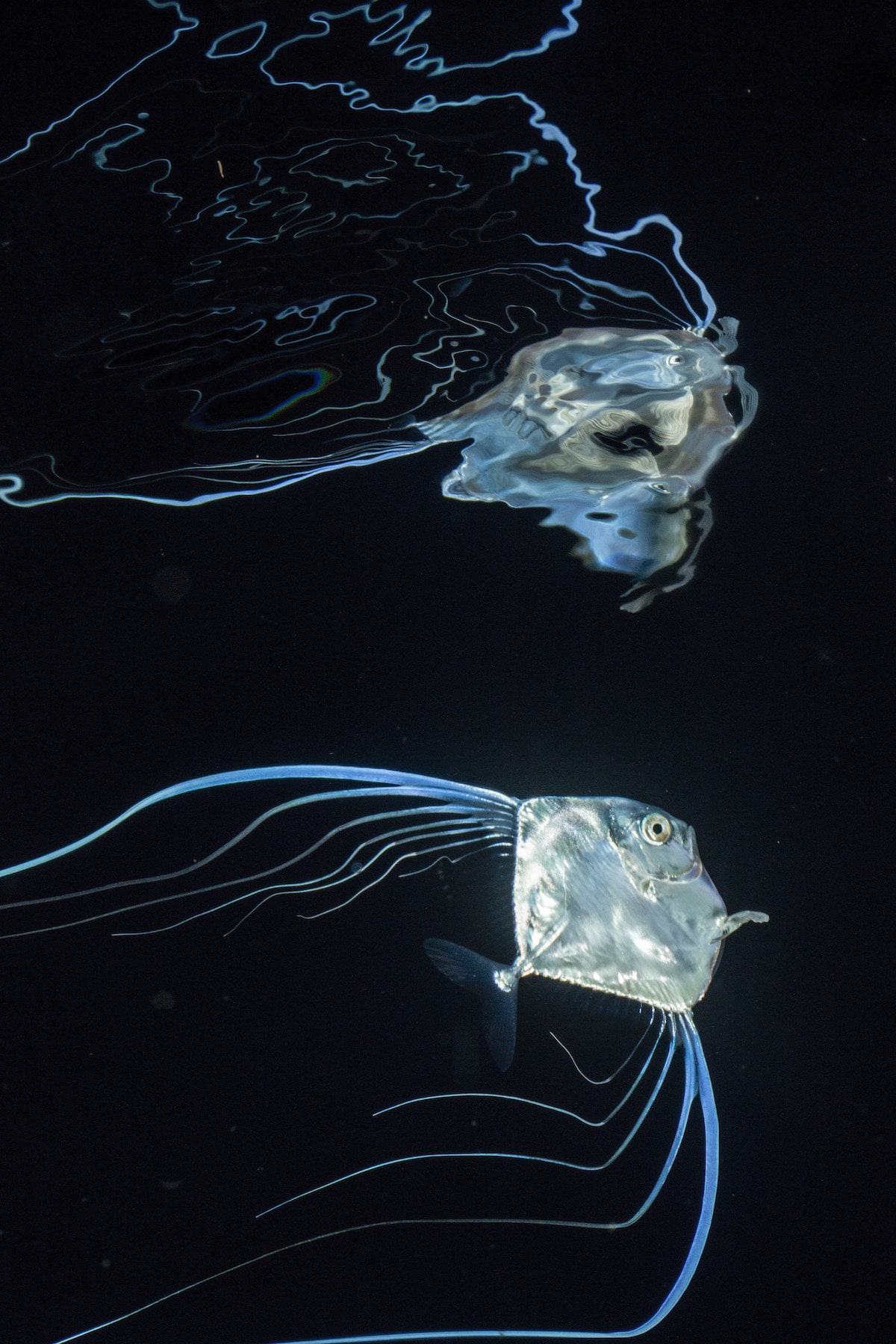
Threadfin jack (Alectis ciliaris). Even though we are drifting over 6000 feet of water, the majority of open-ocean life lives in the top few feet of the surface.
What first attracted you to blackwater photography?
A lot of blackwater photographers today hyperfocus on nailing a beautiful shot of a common animal.
There is no denying that they produce incredible photographs, but thats not why I am here.
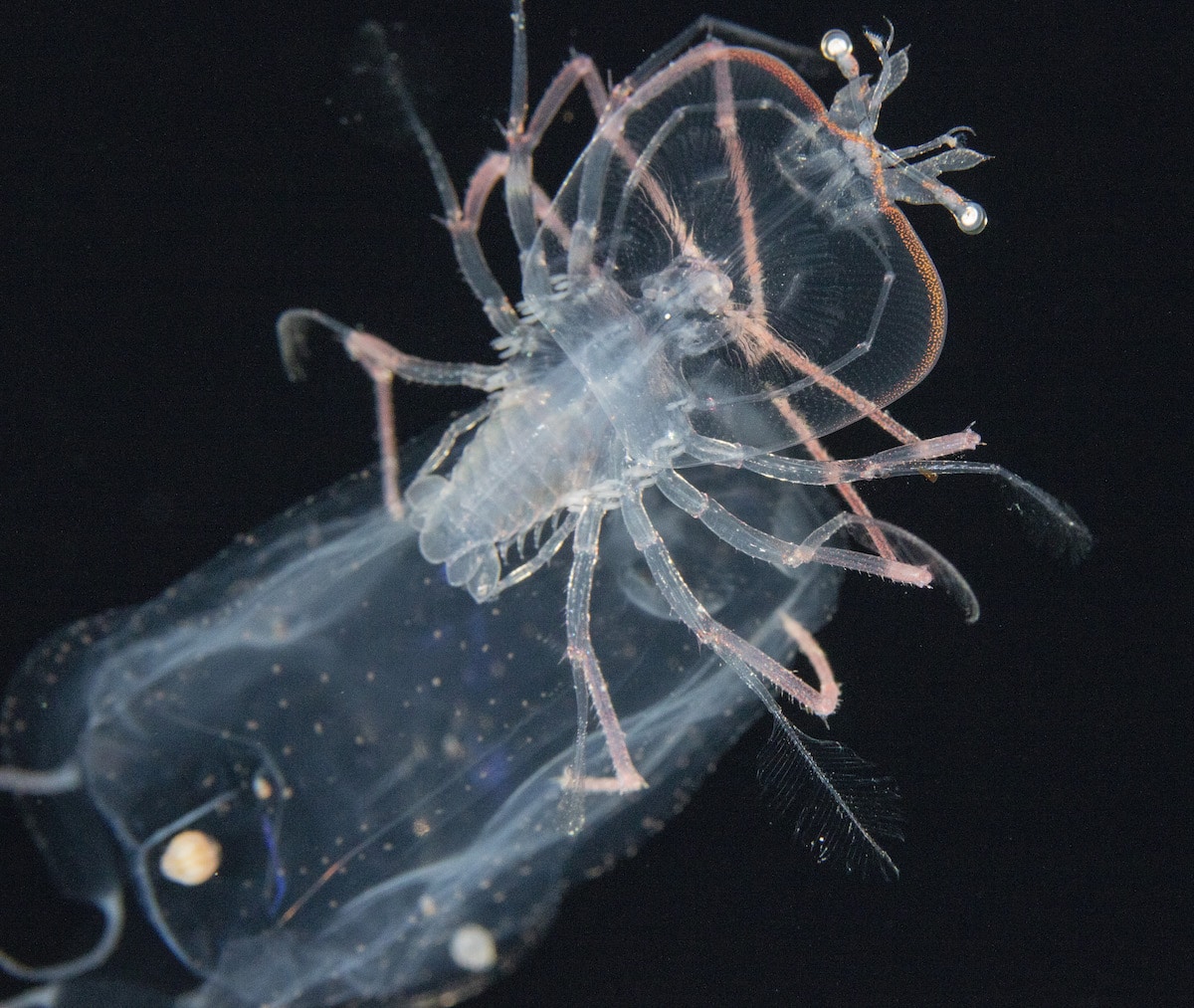
Box jellies are notorious in the south Pacific for their often deadly sting. This lobster young is not only immune, but it will use the jelly’s sting for protection, all while having its next meal on the go.
You dont have to be the best, you just have to be the first.
When you study a habitat, you start to recognize when something is really unusual.
That is only the beginning.

The cookiecutter shark (Isistius brasiliensis) is one of the world’s smallest shark species.
My image of the hairy goosefish (Lophiodes fimbriatus) is a great example.
I knew it was weird because I had never seen anything like it.
I started by looking through the available literature for anglerfish in Hawaii.
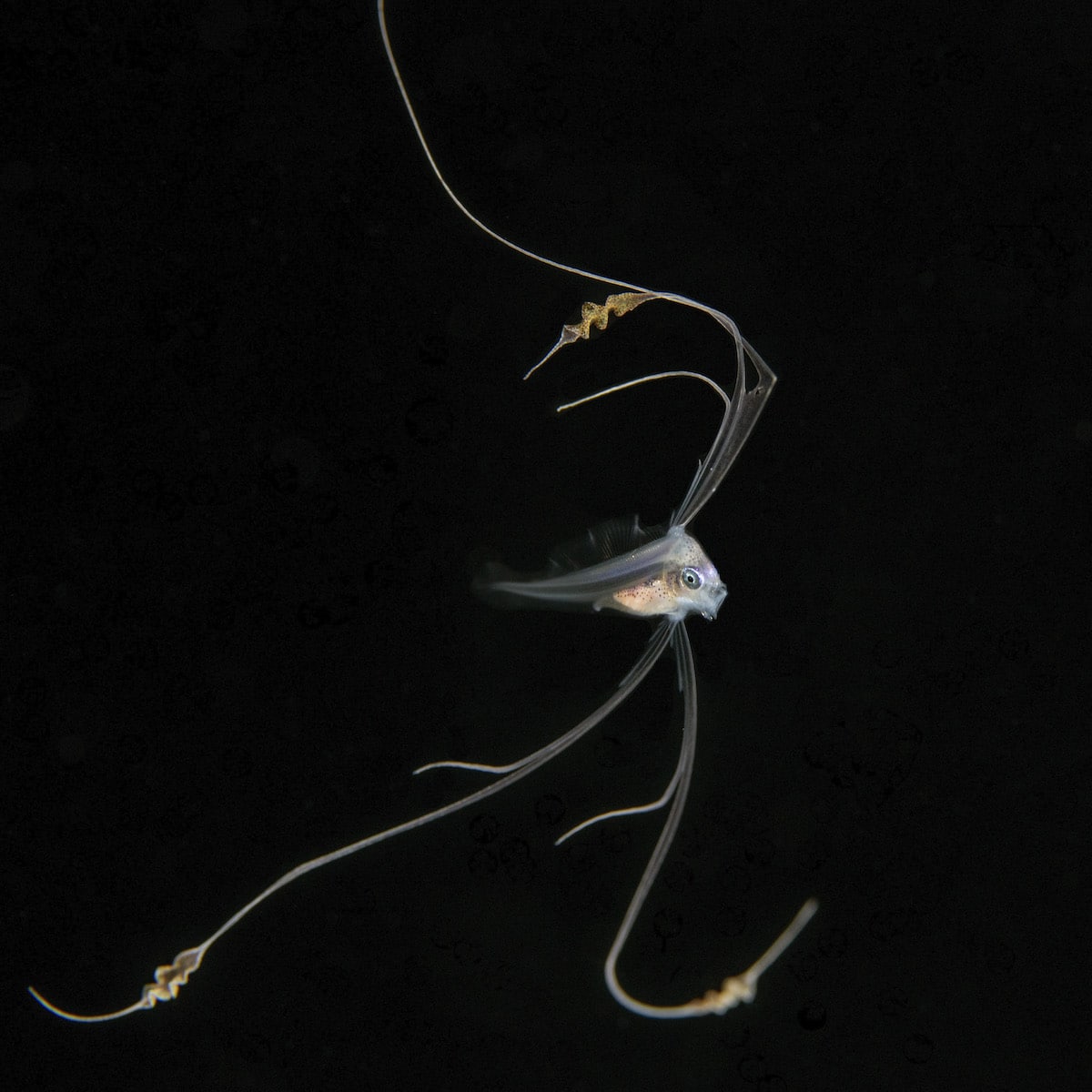
Larval scalloped ribbonfish (Zu cristatus)
This pattern of discovery happens a lot.
The larval fishes we see come from every corner of the nearby ocean.
In this image, two squids fight over a third, unlucky friend in the middle.
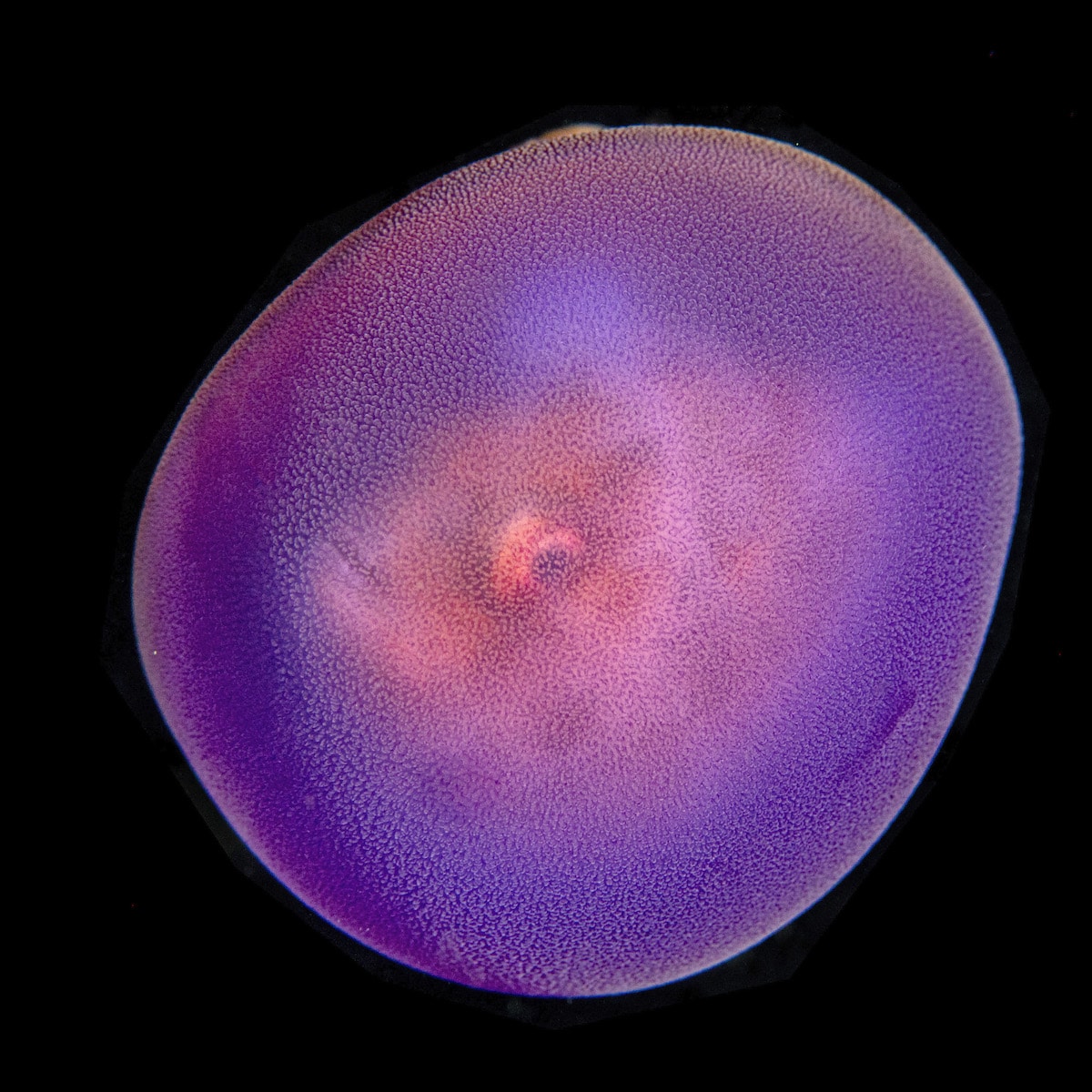
Fish often associate with jellies for protection. In this case, a young jack hides in the bell of a larger jelly. While it looks trapped, it is free to come and go as it pleases.
What sort of research do you carry out going into one of these shoots?
Blackwater dives are highly unpredictable.
It will have drifted away with the current like everything else.

Gempylus serpens and Sthenoteuthis-Snake mackerels are large, fast predatory fish that migrate vertically every night. Because of their deepwater habitat, they are rarely seen. The timing to catch this fish consuming a squid was just dumb luck.
I gain my edge by studying predictors of pelagic biodiversity.
Where are the most individuals of the most species going to be on a particular night?
This requires looking at dive data quantitatively and using it to answer specific questions.
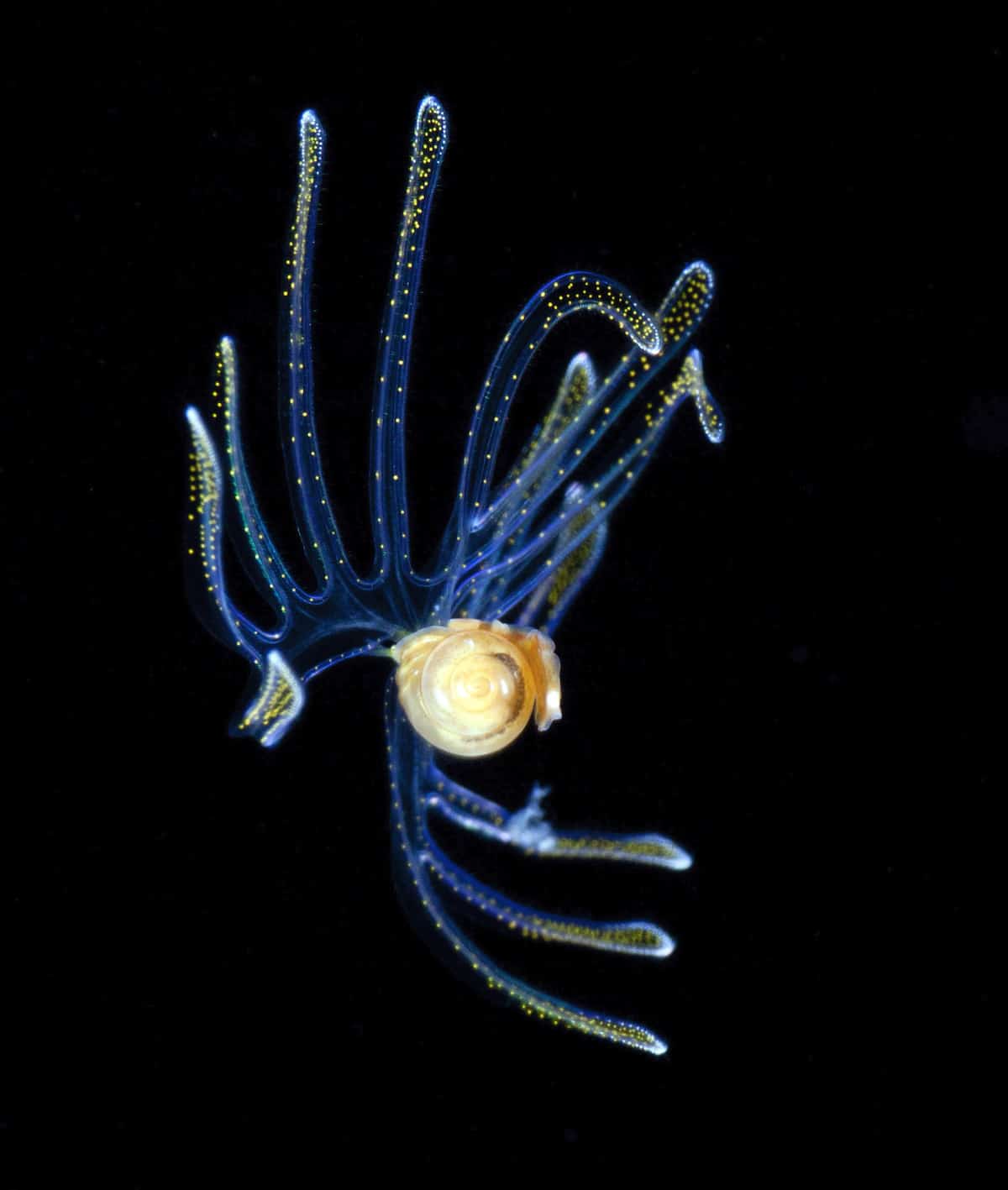
The central shell of a veliger will eventually grow to be the center, or protoconch, of a snail shell with those elaborate wings becoming the snail feet.
My first peer-reviewed paper was born from that very question.
After I had a hundred or so data dives, I had a solid dataset to work with.
There are a few ways that we help.
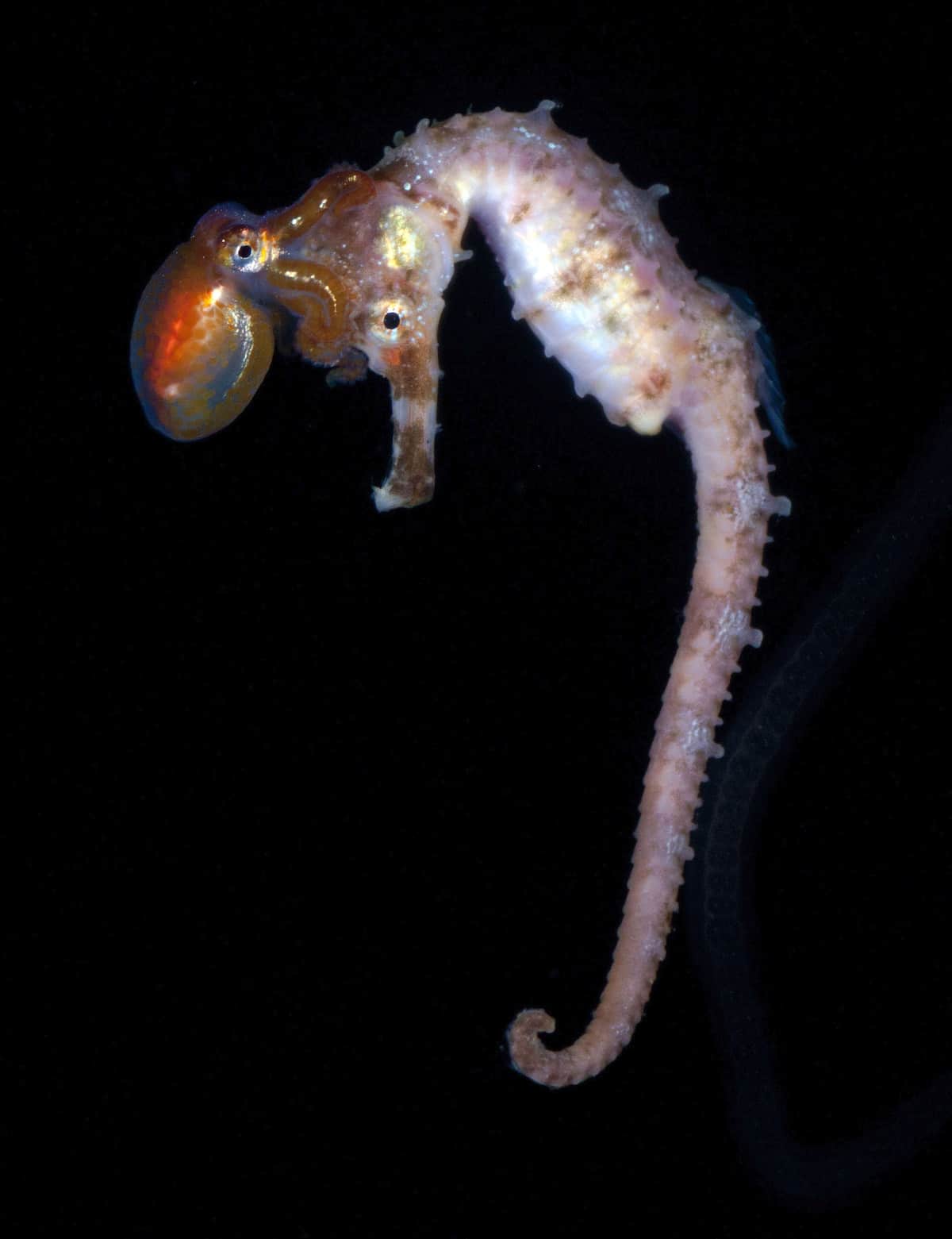
Watching unique interactions among the plankton is one of the more fascinating aspects of blackwater. Often, as in the case of this octopus and seahorse, the nature of the relationship is completely unknown.
Initially, I showed a photo at a conference of a fish swimming inside of a salp.
A pelagic biologist in the audience approached me afterward.
The way that we have traditionally studied the ocean is through various kinds of nets and plankton counters.
When plankton comes up in a net, it is all mixed up.
A lot of work has gone into bluewater diving to study behaviors.
The other way that blackwater photos help is to understand how these animals really look.
This is called meristics or characteristics that are counted.
Then Dave Johnson at the Smithsonian ran meristics and Ai Nonaka ran DNA.
Then the results of all methods were compared, and the results were surprising, to say the least.
Threadfin jack (Alectis ciliaris).
What’s the most challenging aspect of blackwater photography?
There are really two: buoyancy and lighting.
As humans, we spend all of our lives navigating essentially a two-dimensional world.
We have evolved to associate and orient with substrates.
Rarely do we have the chance to travel up or down significantly.
Even when we scuba dive, we are most frequently diving over an area with some sort of bottom.
When I do a blackwater dive, the bottom is 6,000 feet below.
And then you have to train your eyes to focus on very small things that are also adrift.
Helping in this quest is our lighting.
Most people think that we are looking at bioluminescence, but that isnt accurate at all.
Bioluminescence is very, very dim.
If I didnt carry lights underwater with me, it would be a very black dive indeed.
Bright lighting is key to successful blackwater photography.
Box jellies are notorious in the south Pacific for their often deadly sting.
I know there is a nice community of blackwater photographers.
Why do you think this key in of photography, in particular, inspires such community?
The majority of the blackwater photo community is in it to produce pretty photos.
The contrast between chromatophores or unusual anatomical features against a clean, aesthetic black background is a natural combination.
The black water eliminates any distracting backgrounds.
The cookiecutter shark (Isistius brasiliensis) is one of the worlds smallest shark species.
What’s your favorite blackwater photo and why?
My favorite photo has to be my cookiecutter shark.
It is colored a drab orange, and the compositions arent mind-blowing, but the subject is incredible!
They are one of the worlds smallest species of sharks.
And in 2008 when I saw onemy first blackwateronly a tiny handful of people had ever seen one alive!
Wanting a photo of a cookiecutter shark was the initial driving force that started me down the blackwater path.
I worked my ass off for over a decade to find one that was amenable to photography.
The night that I finally photographed a cookiecutter was January 1.
I took off and easily caught up with it.
I looked up to find the boat and it was just a distant glow.
I looked at my depth and I was at 80 feet.
Then I looked at my available air and I had less than 200 psi.
This shark was nearly the siren song that dragged me down to the deep infinity beyond!
Larval scalloped ribbonfish (Zu cristatus)
Fish often associate with jellies for protection.
In this case, a young jack hides in the bell of a larger jelly.
While it looks trapped, it is free to come and go as it pleases.
Where’s one place that you’d love to go for a shoot and why?
I am drawn to the remote areas of the world.
Gempylus serpens and Sthenoteuthis-Snake mackerels are large, fast predatory fish that migrate vertically every night.
Because of their deepwater habitat, they are rarely seen.
The timing to catch this fish consuming a squid was just dumb luck.
What do you hope that people take away from your work?
My work is just a small taste of the amazing weirdness that drifts past our shores every night!
It is easy to get people to pay attention to coral reefs and dolphins.
It isnt often that we can inspire people to care about plankton, but it is so important!
Plankton is the dominant community of over 70% of our earths surface.
It deserves some love, too.
Watching unique interactions among the plankton is one of the more fascinating aspects of blackwater.